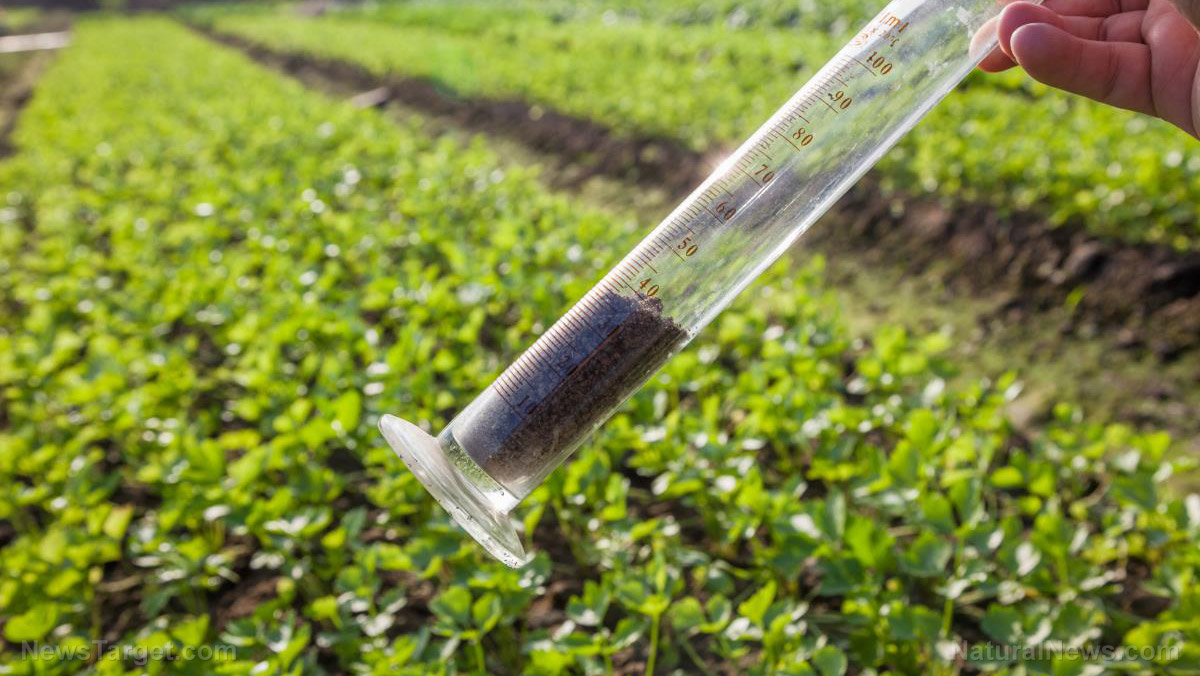Big Ag is ruining what ground water they don’t take: Excess nitrogen reaching dangerous levels, study finds
11/07/2017 / By Jhoanna Robinson

A new study has revealed that big agriculture’s utilization of nitrogen can impact groundwater quality. A team of scientists from the Geological Survey of Denmark and Greenland (GEUS) and the Departments of Agroecology and Environmental Science at Aarhus University were able to conclude that when farmers apply more nitrogen to lands than their crops can absorb, the amount of nitrogen in the groundwater increases, negatively impacting freshwater quality and marine life, and contributing to algae blooms in marine waters.
The study, titled: “Groundwater nitrate response to sustainable nitrogen management,” was published in Scientific Reports, a journal from the publisher of Nature, on Tuesday, September 26.
The researchers made use of isotope-based measurements in oxic Danish groundwater from a period of over 70 years (1940 to 2014) to study the nitrogen sustainability of intensive agricultural nitrogen management in accordance to groundwater conservation and economic development.
The term oxic refers to the presence of oxygen in the groundwater, which is normal in the case of groundwater containing geologic layers. Aside from the nitrate measurement, the researchers also measured the age of the groundwater at the monitoring points.
In Denmark, nitrogen surplus is gauged on a yearly basis as the difference between agricultural nitrogen inputs and outputs on a national level – meaning, it is the amount of nitrogen that is not used and is therefore in danger of being lost to the environment.
Nitrogen surplus in Danish groundwater continually rose between the years 1946 and the mid-1980s. Steps towards environmental protection have since halted this trend while economic development proliferated, showing that almost 30 years of nitrogen regulation in Danish agriculture has led to an outright decline of nitrate concentration levels in oxic groundwater.
Measures to mitigate nitrogen levels in groundwater
Nitrogen reaches groundwater through fertilizer applications, manure, septic systems, among other human and natural sources. It goes through complex chemical transformations as it passes by interfaces between groundwater and surface water, including rivers and marine areas.
The amount of nitrogen discharging directly to marine shorelines is small as compared with the direct contamination found in rivers. (Related: Chemical fertilizers applied to crops will contaminate drinking water for decades.)
The agricultural sector has been adapting to societal demands to adjust agricultural production practices. There are many measures in place all over the world to prevent agricultural processes from causing harmful effects on aquatic environments. Such regulations typically rely heavily on four factors: right time, right source, right timing, and right placement. Being mindful of one’s own nitrogen footprint can also go a long way towards practicing nitrogen-sustainable behavior, such as reducing food wastage, lessening meat intake, and recycling.
“Understanding where nitrate removal is highest can inform management of agricultural streams. This information can help us improve water quality more effectively,” said State University of New York College of Environmental Science and Forestry graduate student Molly Welsh.
In a separate study that was published in the Journal of Environmental Quality, Welsh and her colleagues found that the factors that can positively affect nitrate removal in streams include vegetation and soil type, fine sediment textures, dissolved carbon content, bank slope and height, time of year, and organic matter.
“Our results show that it may be possible to develop simple models to guide nitrogen management. However, more work is needed in terms of gathering and evaluating data. Then we can find the best parameters to include in these models,” Welsh said.
Read more stories such as this one at CleanWater.news.
Sources include:
Submit a correction >>
Tagged Under:
agricultural production, agricultural sector, Big AG, biodiversity, chemical fertilizers, clean water, drinking water, Ecology, fertilizer applications, groundwater quality, nitrate concentration levels, nitrogen footprint, nitrogen regulation, nitrogen-sustainable behavior, oxic groundwater, sustainability
This article may contain statements that reflect the opinion of the author
RECENT NEWS & ARTICLES
COPYRIGHT © 2017 ECOLOGY NEWS




















